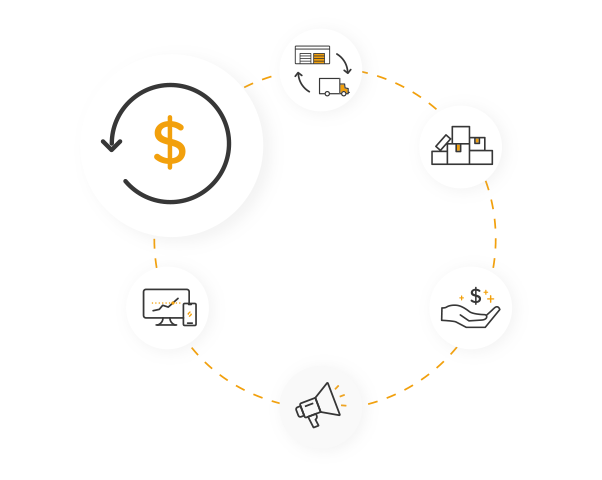At NRF’s Big Show virtual conference, experts across the industry shared first-hand experiences about adapting to the new retail landscape and advice for preparing for what lies ahead. Now that Chapter One is over, we’re sharing the top 3 retail and returns trends to help your business in 2021.
Omnichannel can be a winning strategy.
While consumers are still shopping in brick-and-mortar stores that follow COVID-19 precautions, the most successful retailers in today’s landscape are reaching customers by using multiple channels and leaning into ecommerce.
U.S. ecommerce sales reportedly grew 40.3% to reach $839.02 billion in sales at the end of 2020[1]. Not only that, retailers will likely continue offering flexible shopping and returns options, such as free delivery & free returns, curbside pickup, or BOPIS & BORIS.
A great example of a successful strategy came from Bed Bath & Beyond, which partnered with Google to enhance its omnichannel experiences. Through this partnership, they can now scale for peak shopping moments, analyze real-time insights, and even optimize inventory and predict demand to make data-driven decisions.
When it comes to reverse logistics for omnichannel retailers, Optoro works to improve outcomes across all points of the returns process. If returns are a pain point for your business, schedule a demo to talk with us.
Customer experience is heavily reliant on technology.
Technology has dramatically changed the way retail customers engage and choose to be serviced, whether they’re in person or online.
At NRF, representatives from Walmart and Wayfair noted that the digital transformation of retail has been accelerated by 3-5 years. Retailers need to fully embrace technology and incorporate it into all areas of their business to meet consumers’ changing needs.
Digital experiences will be critical for capturing customer attention and loyalty. There are opportunities to leverage frictionless technologies at each point in the customer journey, such as:
- Wiring real-time customer survey feedback into day-to-day operations
- Incorporating digital touchpoints into physical stores
- Personalizing shopping and returns experiences for each individual consumer
- Connecting retailers with customers through live streaming (“live shopping”) and additional mobile experiences like AR & VR
- Implementing online returns portals and self-service centers
- Providing QR codes for seamless returns experiences
Based on this trend, it’s important that retailers focus on digital-first experiences to further drive loyal customers and repeat purchases in 2021.
Sustainable business is good business.
While the pandemic hasn’t changed the need for a healthier, greener planet, it has put a spotlight on conversations around ethical consumption, community impact, and recommerce.
Ethical consumption: Overconsumption is a challenge that IKEA is addressing by encouraging customers to be more sustainable at home. Now IKEA is sharing where an item was responsibly sourced from along with its materials and multi-functional purposes. They’re also looking into their own operations to prolong the lives of their products and materials to ensure everything is managed responsibly.
Community impact: Businesses are no longer expected to simply provide an item, but also to improve the community in which they operate. H&M, for example, partners with the Children’s Center in Detroit to host events, fundraisers, and volunteer efforts to strengthen the surrounding community.
To see the social impact our own company has made, check out Optoro’s 2020 Impact Report here.
Recommerce: By connecting returned or overstock inventory with buyers on secondary channels, retailers can maximize recovery and minimize environmental impact. For example, according to Jennifer Keesson, IKEA, US Sustainability Manager, “IKEA is investing in secondhand and buy-back and resell channels of their furniture in the US market.” Leaning into secondhand sales is proving to be a leading strategy for those looking to become a circular business.
From these 3 retail and returns trends, it’s clear that understanding what will be meaningful to customers in the future is key. Retailers need to use the right channels, technology, and sustainable practices today to help their customers tomorrow.
If you want to learn more about retail and returns trends:
- Follow “#ReturnsReport” on LinkedIn for our latest content
- Check out our blog to read more posts like this
- Schedule a demo with us to see how we can improve your future returns
Source 1: U.S. Ecommerce Market Report | Digital Commerce 360, 2020
